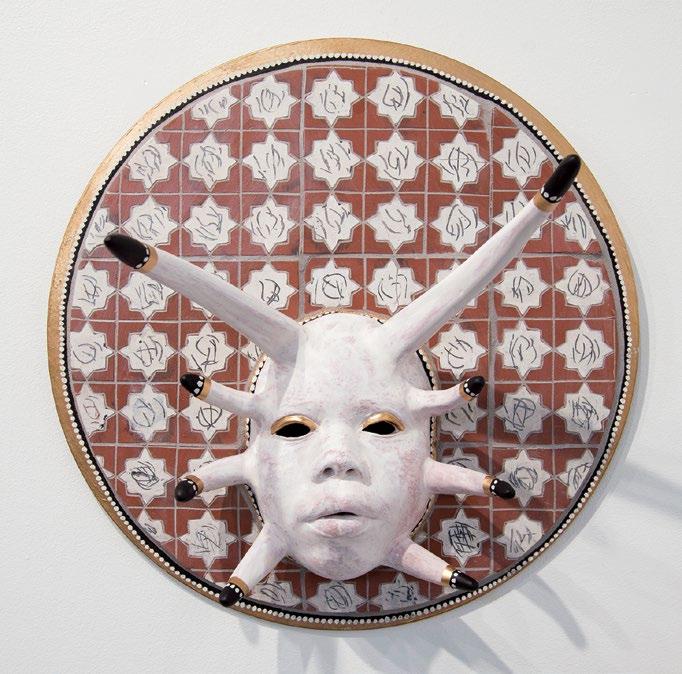MATHEMATICAL PATTERNS IN CLAY Guy Van Leemput
Editors: How do you come up with the surface patterns that are prevalent in your work? Guy Van Leemput: I have been fascinated by patterns since I was a child, especially patterns in nature, such as the arrangement of seeds on a sunflower, the scales on a large pine cone, or the arrangement of spines on a cactus. They are the result of nature’s solutions to complicated problems. Later, I understood that you can use mathematics to investigate how these patterns come about. I learned how the eye sees two sets of opposing spirals in each sunflower; if you count the number of spirals in a set, these numbers always turn out to be two consecutive numbers in the Fibonacci sequence. Later, I discovered that the golden ratio is the basis for the Fibonacci numbers and all those beautiful patterns. And that our brains (and certainly mine) want to order, structure, and catalog everything. The eye always wants to see patterns. When at school, I was introduced to the graphic work of M.C. Escher, which I found intriguing. He copied the Moorish patterns from the Alhambra in Granada, Spain, and used them as a basis for his graphics. I was actually more interested in the origin of those original patterns. How did people in history manage to find them? I studied historical examples, did extensive research into tiles, and wrote a treatise on tiling the plane to get my master’s degree in mathematics. I don’t want to imitate nature, but to understand it, to recognize patterns and vary them. You can discover these variations through mathematics.
Above: A Bigger Mind (in the snow), 11 in. (28 cm) in diameter, woodfired porcelain, 2020. Opposite top: A Bigger Mind (alternate view), 11 in. (28 cm) in diameter, wood-fired porcelain, 2020. Opposite bottom: Big Mind Circles, 101/4 in. (26 cm) in diameter, wood-fired porcelain, 2020. Photos: Dirk Theys. 4
www.ceramicartsnetwork.org
Eds: How did you decide to switch from a career as a mathematician to one as a ceramic artist? GVL: For me, working in ceramics is much more than a choice, rather it was more something I could not avoid. The summer before I started studying mathematics at university, I asked a local ceramic artist if I could come and work with him, not for payment but to learn. And I continued to do so throughout my studies and the years that followed. My work as a math teacher as well as having a young family pushed my own ceramics work into the background, but after the death of my best friend, I realized I wanted to take it










